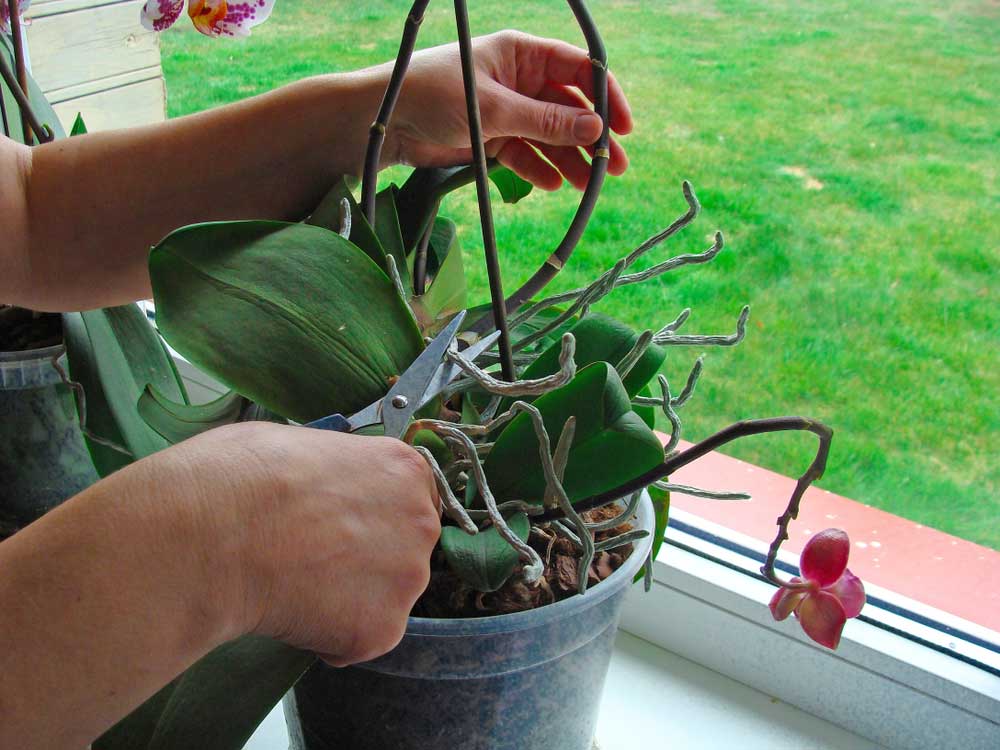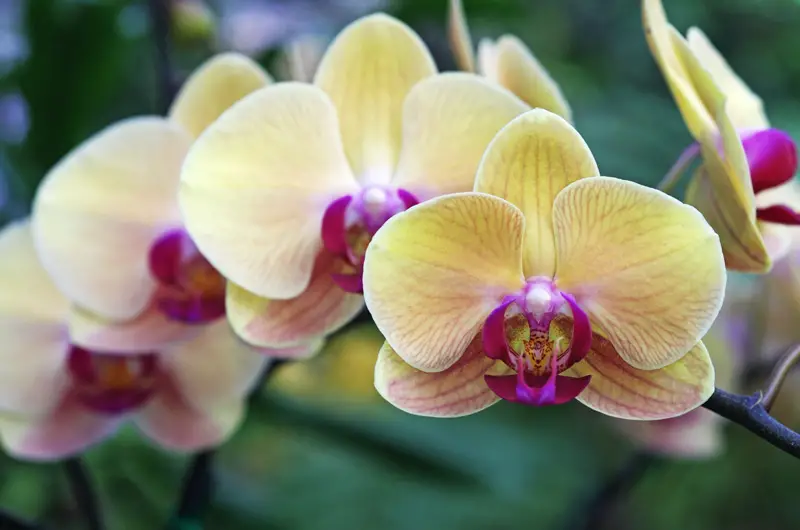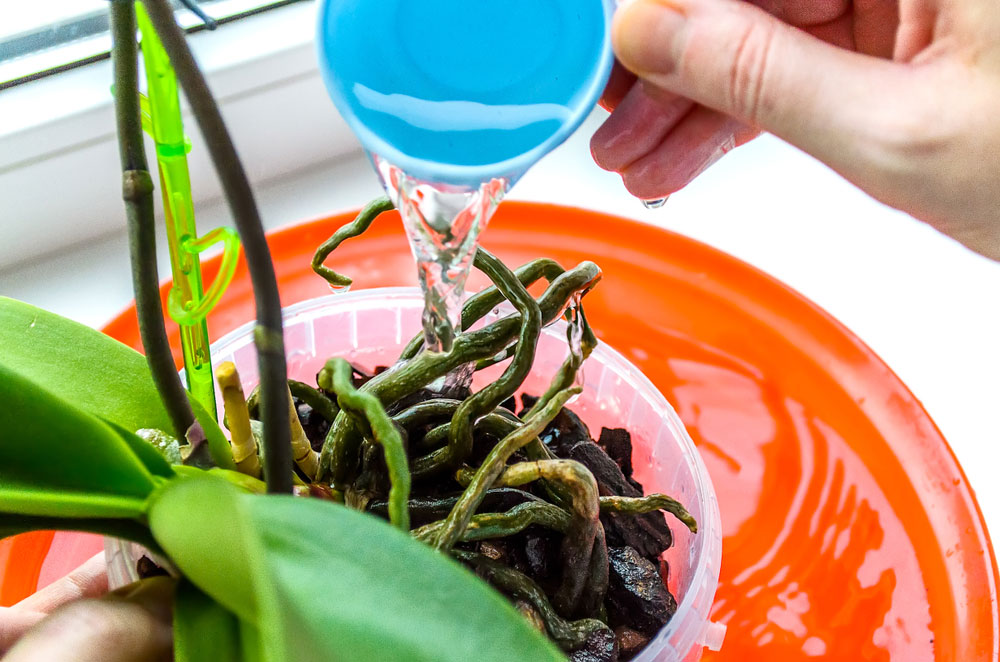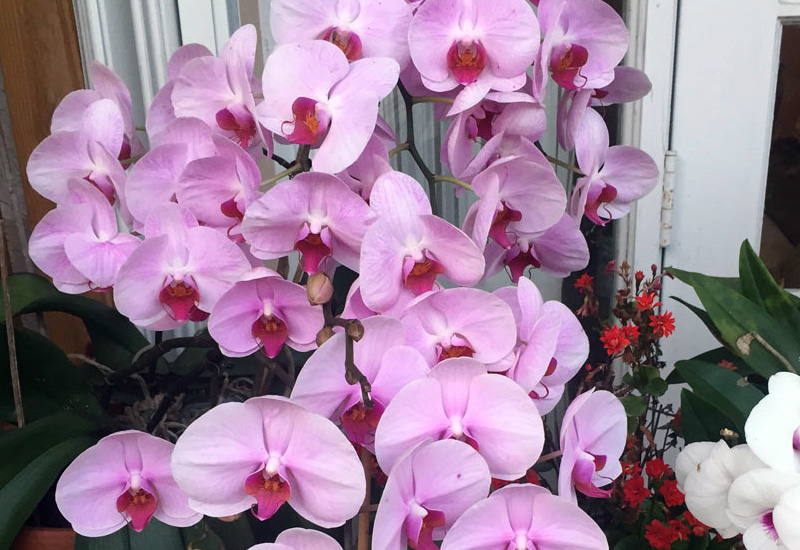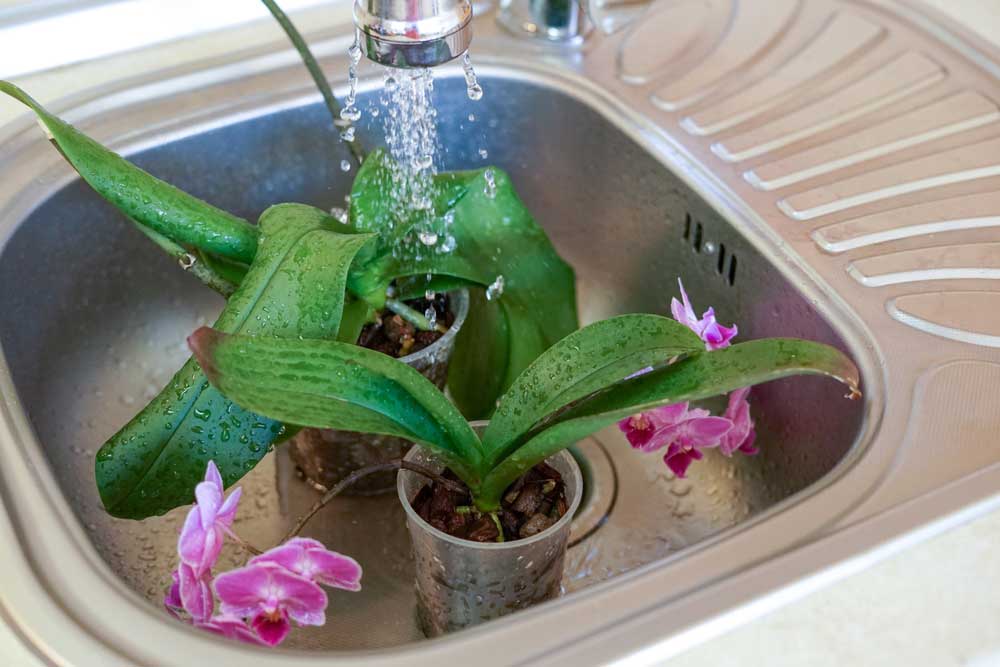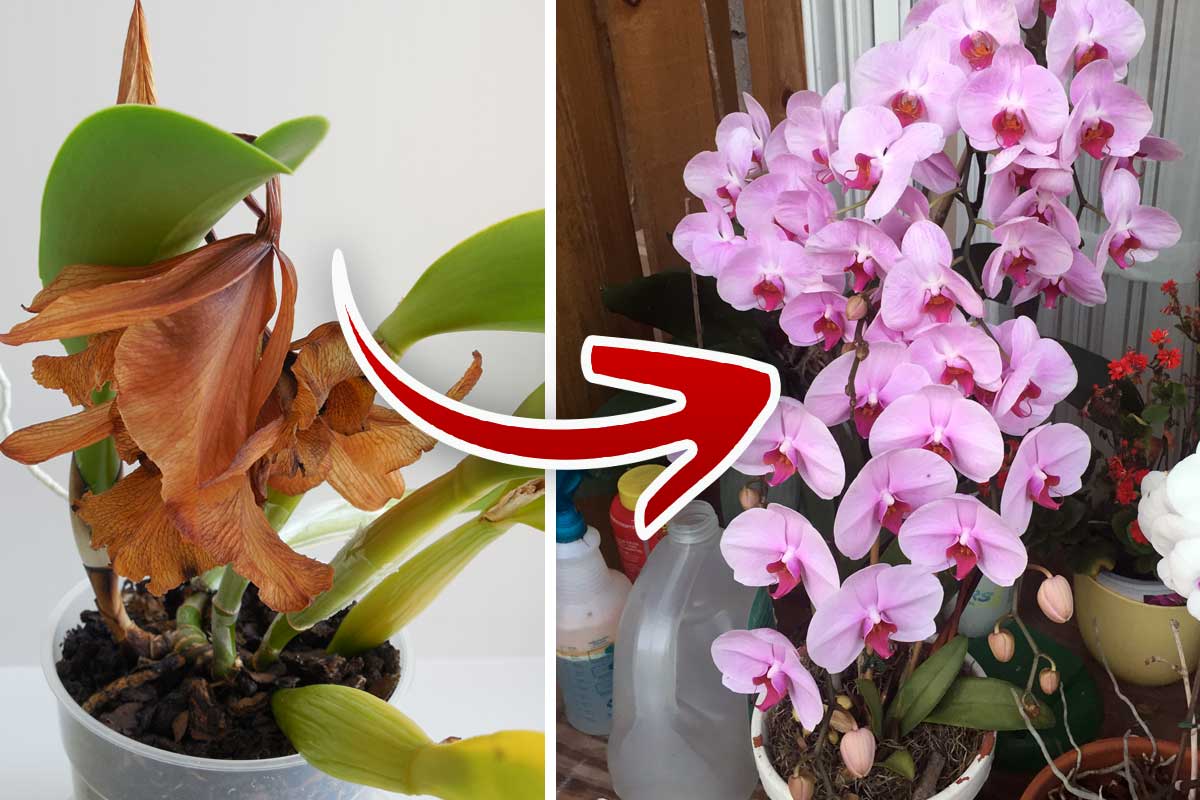
Orchids have long been considered a finicky plant that can wither and refuse to produce blooms if not provided with certain growing requirements.
It’s no surprise that the expression “hothouse orchid” is used to refer to someone who has to have everything done a specific way.
Since orchids are grown for their stunning blooms, having one that refuses to produce these sought-after flowers can be frustrating for any gardener.
The good news is that by implementing the tips below, you will increase the chance of getting your orchids to bloom.
Too Much Light or Not Enough Light
The number one reason as to why your orchid isn’t blooming is not providing the right amount of light.
Light is important to ensure your plant is healthy and happy.
When it is receiving inadequate light, the plant won’t have enough energy to produce those much desired blooms.
With that said, however, too much light can also cause problems as well, including burnt leaves and failing to produce blooms.
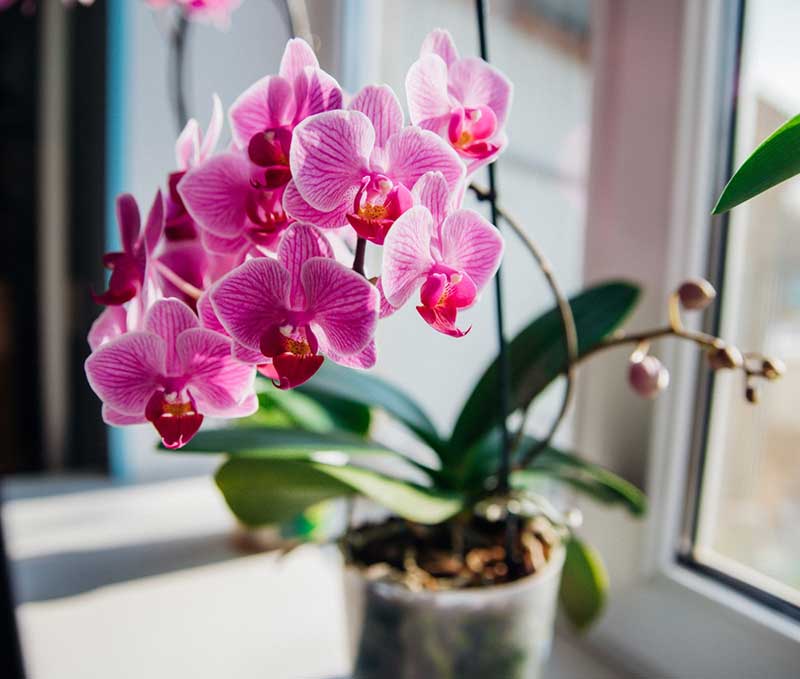
For best results, make sure your orchid receives indirect sun for 12 to 14 hours a day.
Avoid placing the plant in a room that is lit 24 hours a day.
If using grow lights, set a timer so that the orchids get no less than 12 and no more than 14 hours of bright, indirect light every day.
Adjust the Temperature
Orchids are tropical plants, so they thrive in climates with higher temperatures and humidity levels. However, in order to get the orchid to bloom, it will also need to experience a drop in temperature.
Reducing the plant’s night time temperature by 10 degrees cooler than its daytime temperature will help to trigger blooming.
This should be done at the start of the plant’s blooming season and continued for 2 weeks.
Over or Under Watering
As with any other plant, orchids need the right amount of water to grow healthy and strong, which is needed for blooms.
Providing too much water results in soggy roots that lead to root rot and various other fungal problems. It will also prevent the plants from blooming.
On the other side of the coin, however, is not providing enough water. This will result in the plant wilting, and developing dry and brittle leaves. It even interferes with the orchid’s ability to grow blooms.
The best defense against over and under watering the orchid is to first ensure it is growing in the right soil. For orchids, a medium designed just for them is ideal to ensure the right amount of moisture is maintained around the roots while also allowing for good drainage.
You should also set the orchid pot on top of a humidity tray to increase the plant’s chance of survival.
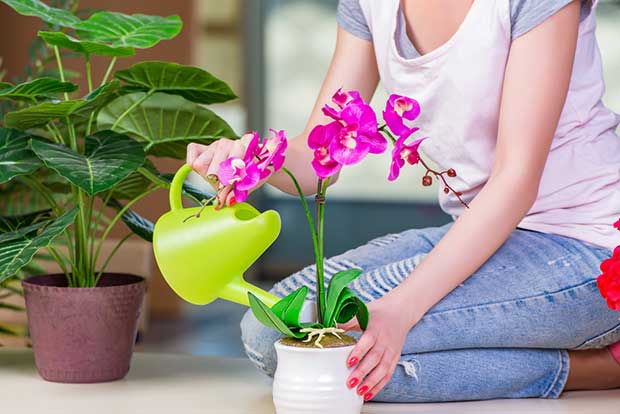
Make Sure to Feed the Orchid
Orchids are not heavy feeders, but that doesn’t mean you shouldn’t give them any type of fertilizer. In fact, adding a bit of fertilizer to your orchid’s soil can help entice it to bloom, while also providing it with a bit of a boost to keep it healthy.
For the best results, use a urea-free fertilizer for orchids. Make sure to follow the application instructions printed on the bottle.
Conclusion
Despite their picky behavior, orchids can actually live for many years and can even bloom multiple times throughout the year.
In fact, the oldest, and largest, living orchid is over 150 years old and is found in the Singapore Botanic Gardens. The orchid, which is a tiger orchid, was planted in the garden by Lawrence Niven in 1861. This just goes to show you that with a lot of love and the right amount of care, your orchid can thrive and bloom for many years to come!





